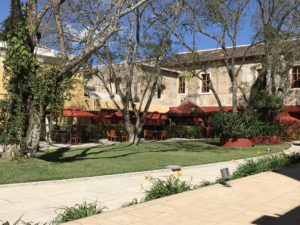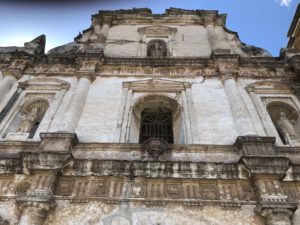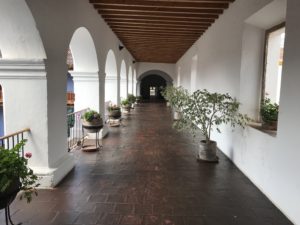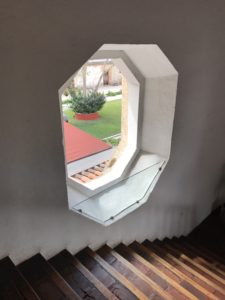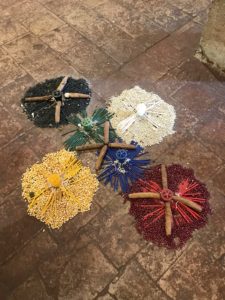I’m not prone to carrying my laptop around with me, but occasionally I pack it up and come here to catch up on emails and work on posts. This one being the current example.
This is where I sit. It’s a bench that is always in the shade and it’s right outside the door to a long gallery room with photos and paintings by Guatemalan artists. The wifi signal from the little cafe across the courtyard is good, and there are Americanos and smoothies to enjoy. I should add here that I usually feel like I have the place to myself. I know they have events here, but take out the security and housekeeping folks and there are seldom many people about.
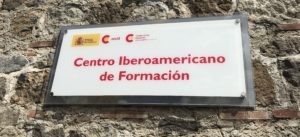 Here’s some history. The Training Center of the Spanish Cooperation in La Antigua Guatemala is located in the old Colegio de la Compañía de Jesus, (Jesuit College) founded in 1582. Because it was originally a college, the design and structure lends itself beautifully to what it is used for today. It’s part training center, part conference center, and part museum and art center.
Here’s some history. The Training Center of the Spanish Cooperation in La Antigua Guatemala is located in the old Colegio de la Compañía de Jesus, (Jesuit College) founded in 1582. Because it was originally a college, the design and structure lends itself beautifully to what it is used for today. It’s part training center, part conference center, and part museum and art center.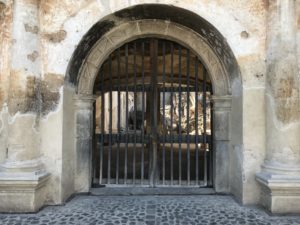
The original entrance to the college and church front. (oops, finger shot). In 1767, the year in which all the Jesuits were expelled from the lands of Spain, the College was disabled and over time several earthquakes destroyed its structure. For years, what little remained was used as a textile factory, school, and market.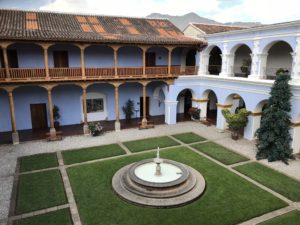
In May 1992, Spain and Guatemala signed an agreement to prepare a restoration project through the Ibero-American Cultural Heritage Preservation Program of the Spanish Agency for Development Cooperation (AECID), with the approval of the National Council for the Protection of La Antigua Guatemala (CNPAG). That’s a mouthful. 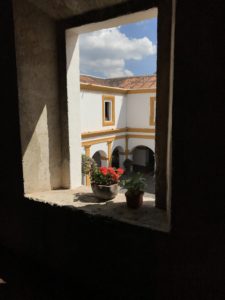
In 1994, the AECID signed an agreement with the Municipality of La Antigua, owner of the building, thanks to which the Municipality ceded the use of the building to the AECID for the creation of an International Training Center for Development of Ibero-American character and culture.
The rapid restoration process allowed spaces that were previously abandoned to be brought back to life in August 1996, boosting the social and cultural activity of the city and expanding its scope of action to the entire Latin American region.
Its official inauguration took place in October 1997 by Her Majesty Queen Sofía of Spain.
Here is a floor “painting” in one of the gallery rooms. This one is done with wood, dyed beans and corn, and sand. As we move through Lent towards Semana Santa, (Holy Week), I’ll be showing you some much more elaborate examples of this art that are done right on the streets.
I am well and hope you all are too. Speaking of which, I was just thinking that two years ago at this time I was on my first wanderin’ trip and came down with shingles. Ah, the good ole days. 🙂
